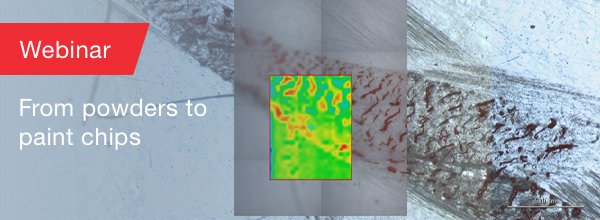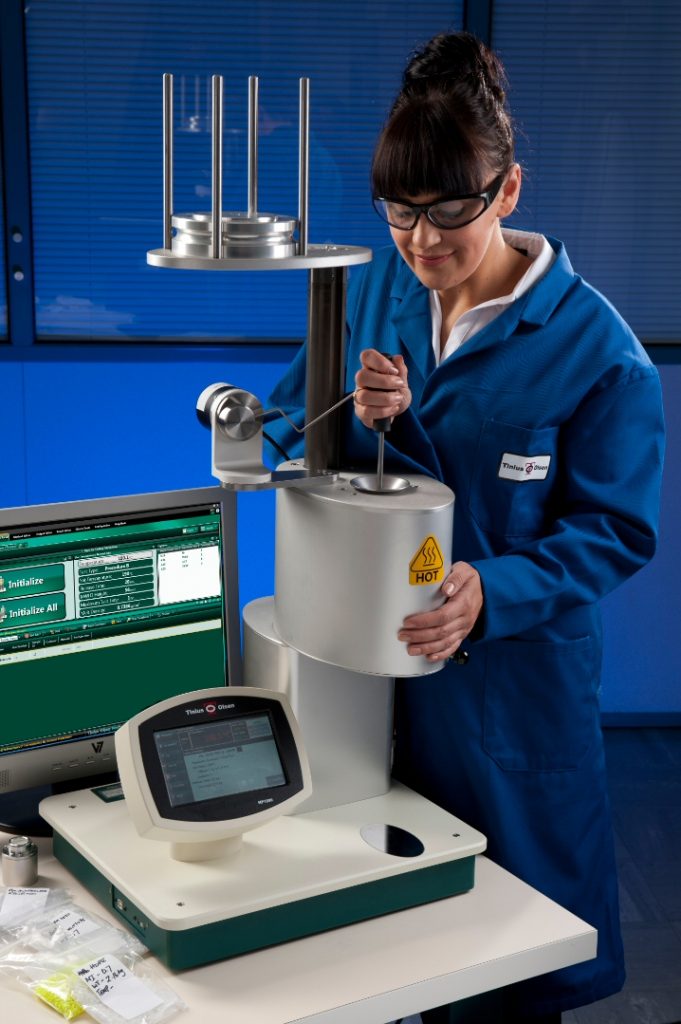Recorded Webinars
Separating Overlapping Effects in Analytical Measurement Curves
About this webinar: One of the advanced features within our Proteus® software is the Peak Separation function. It is used to separate super-imposed peaks in thermal analysis curves and accurately determine individual peak areas. Time: 2 November 2023 (5.00 p.m. – 6.00 p.m.) In this webinar you will look at: What Peak Separation…
Read MoreFoundation to FTIR Microscopy & Sample Preparation Techniques
About this webinar: FTIR microscopy combines the spatial resolution of a microscope with the analytical power of spectroscopy. This presentation will examine the foundations of microspectroscopy – sample preparation, data collection and analysis – featuring applications from different industries. With coverage of basic methods like compression cells, ATR, transmission and reflection, this webinar will be…
Read MoreWebinar: Differential Scanning Calorimeter- Do More Than Just Heat Cool Heat
About this webinar: This webinar is the perfect opportunity for you to gain a comprehensive understanding of the basic principles of the DSC 300 Caliris, and to be introduced to its new and exciting hardware and software features. But that’s not all, we’ll also be providing examples of how the DSC 300 Caliris has been…
Read MoreWebinar: Thermal Expansion – and How Thermal Analysis Can Help Create Quality Products
About this webinar: Thermal expansion produces mechanical stresses that may cause problems for a product’s longevity, especially when the thermal expansion coefficients of the used materials do differ. Thermomechanical analysis (TMA) is a perfect tool for studying the expansion behavior and softening temperature of various materials. It provides fundamental information about the coefficient of thermal…
Read MoreWebinar: From Powders to Paint Chips: Modern Microspectroscopy Draws Big Information From Tiny Samples
Attend this webinar to see how to improve the speed and accuracy of results with modern microspectroscopy systems even with users of varying skill levels. Hear what diffraction-limited IR optics, enhanced visual performance, and powerful 64-bit software with a new user interface can do in sample prep, microplastics, fiber analysis, coatings, micro-mapping and ATR analysis.
Read MoreWebinar: UL94 Flammability Tester for Plastics – Application Demo for 50 W Flame Calibration and HB Test
About this webinar: Plastic is used in almost all electronic components and applications. Short circuits or heat can cause sparks in these assemblies and ultimately a fire. For manufacturers and users of such components, it is therefore desirable to use fire-resistant or flame-retardant material. At a minimum, however, the material requirements stipulated by international standards…
Read MoreWebinar: Infrared Spectroscopy for Biological and Biomedical applications
Investigate protein secondary structures in biological samples with FTIR spectroscopy
Read MoreWebinar: Adopting Molecular Spectroscopy Techniques in Pharma Manufacturing
Date: 7th September 2021 Time: 10.00 pm-11.00 pm (Malaysia Time) About this webinar: Pharma and biopharma manufacturing are under constant pressure to improve efficiency, increase productivity and reduce costs while still maintaining product quality. Molecular spectroscopy (Fourier transform infrared [FTIR], near-infrared [NIR], and Raman) are versatile, non-destructive, and green techniques that enable rapid…
Read MoreMicroplastics Virtual Forum
Microplastics have been found in our oceans, drinking water, and food supply brought about by pollution and manufacturing practices. These particulates can be smaller than the eye can see, and their impact on our environment and our health need to be studied.
Read MoreWebinar: Melt Flow Indexers and how to get accurate and repeatable test results
Date: 18th August 2021 Time: 08.00 am-09.00 am (Malaysia Time) Key learning objectives: Introduction to Melt Flow Indexer and working principle Why do measure Melt Flow Rate and how does it improves the manufacturing process Discuss the different types of test standards, methods & results How to get accurate, repeatable MFI test results Live Q&A…
Read More









